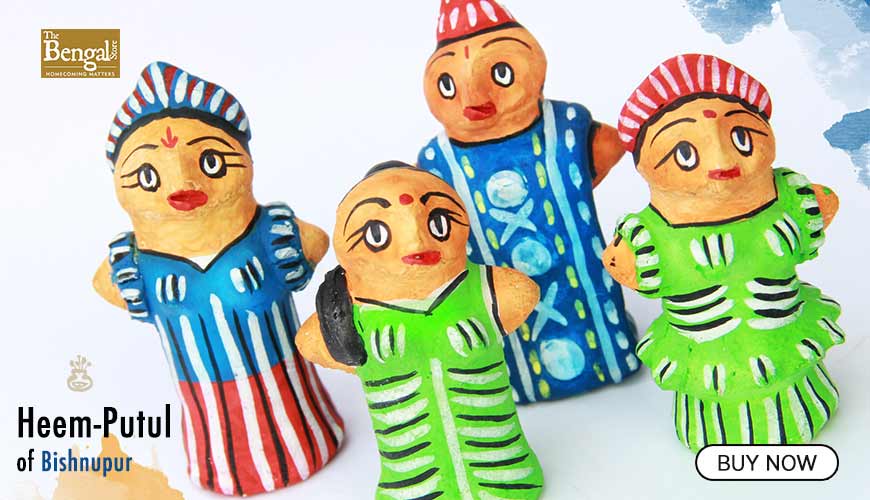Vishnu on a playing card, the 'Dashabataar tash' of Bishnupur
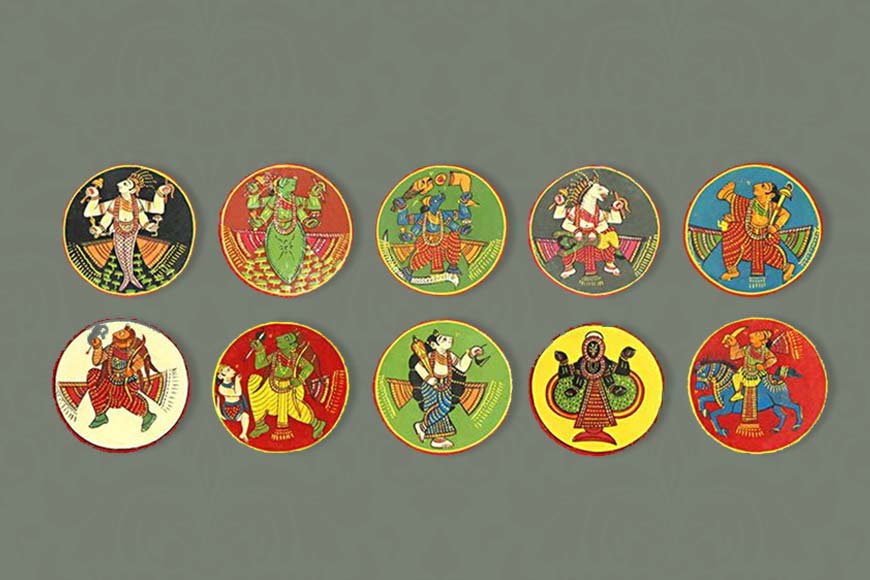
Dashavatara (Sanskrit) or Dashabataar (Bengali) is the collective name for the ten avatars or incarnations of Vishnu. India's ancient scriptures and mythology provide abundant information about each avatar and the stories associated with it. Only in one corner of Bengal, however, will you find the traditional art of making a pack of handmade, circular playing cards themed on each avatar. Yes, you read that right. What's more, you can play a fairly complicated game with them too, provided you have the full set of 120.
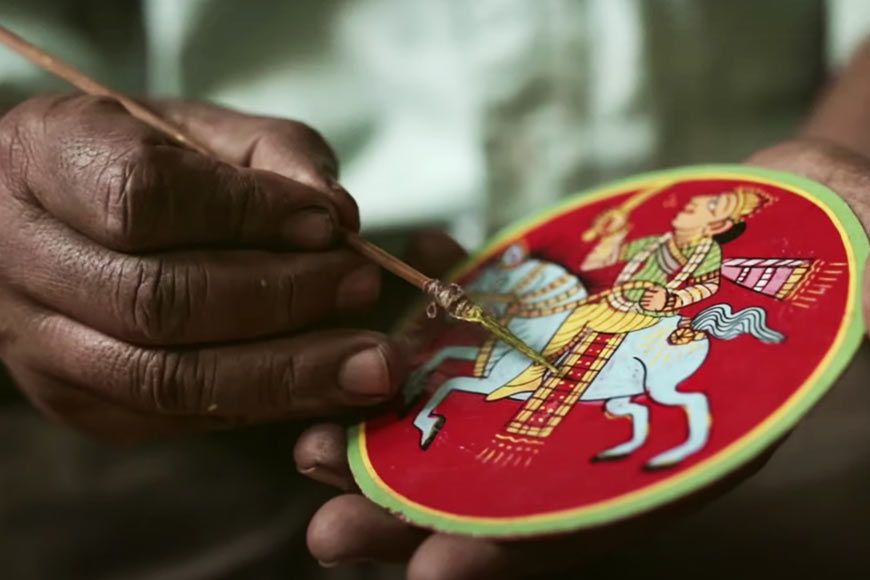
The most widely accepted version of how these cards came into being seems to be that Bir Hambir, who ascended to the throne of Bishnupur (today in Bankura district of West Bengal) in 1592, first saw a card game in the court of Emperor Akbar, with whom he enjoyed a close personal relationship. The Mughals called their specially themed playing cards Ganjifa, a name that is still prevalent among the Dashabataar 'taash' (card) makers of Bishnupur today.
Following Hambir's careful instructions, the first Dashabataar cards were reportedly created in Bishnupur by an artisan named Kartik Faujdar, whose descendants are still the only artisans in the country who create these unique works of art. The royals of Mallabhum (mostly modern day Bankura, ruled by the Malla kings, of whom Hambir was the 49th) were delighted with Kartik's efforts, and the Dashabataar card game rapidly gained popularity.
However, an alternative version put forward by renowned historian and scholar Haraprasad Shastri holds that the cards originated in the 8th century AD or thereabouts. Since we have no way of verifying the historical information right now, we should perhaps focus on the present, and see how the Dashabataar cards are doing in Bishnupur.
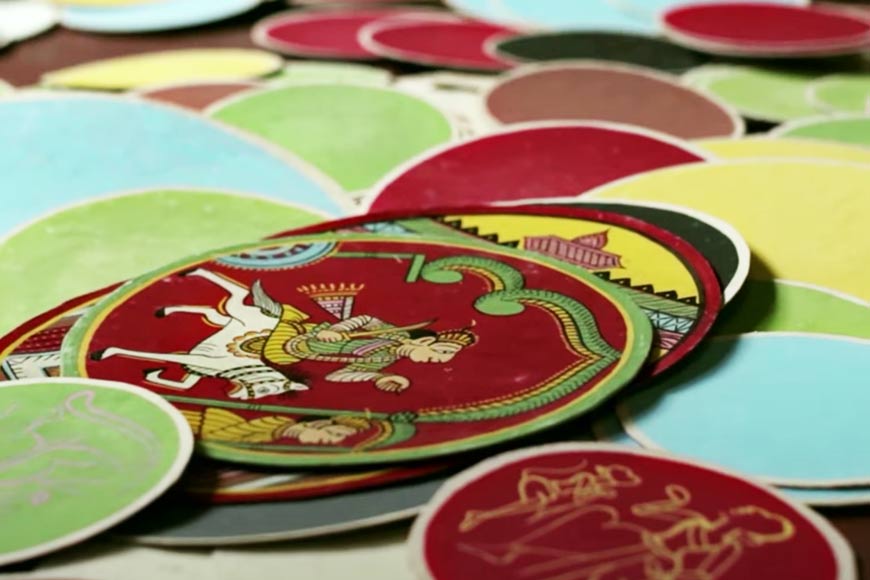
As already mentioned, the Faujdars are the only family still engaged in the art of making these cards. Inevitably, their art has undergone changes in order to keep up with the times, and in the face of rampant competition from other sources of entertainment. Originally a pack of 120, the number of Dashabataar cards to a pack has now been substantially reduced. This has vastly reduced their price, as well as the effort that goes into their making. On the flip side, the reduction in number means that the cards are no longer fit for a game, but function perfectly as decorative objects.
The base material is cloth, combined with starch, paint, and lacquer. Essentially, a piece of cloth is folded and pasted together with tamarind glue ('tentuler aatha' in Bengali). Once this dries up, it is covered with chalk dust to achieve the required hardness. A smooth stone is then used to even both faces of the cloth, and it is cut into circular pieces, on which the avatars are painted.
As with hundreds of traditional art forms all over the country, the nearly forgotten art of making Dashabataar cards is on the decline, primarily owing to a lack of buyers. As a result, the younger members of the Faujdar family see no reason to continue an art that demands much in terms of skill and patience, but promises little in return.
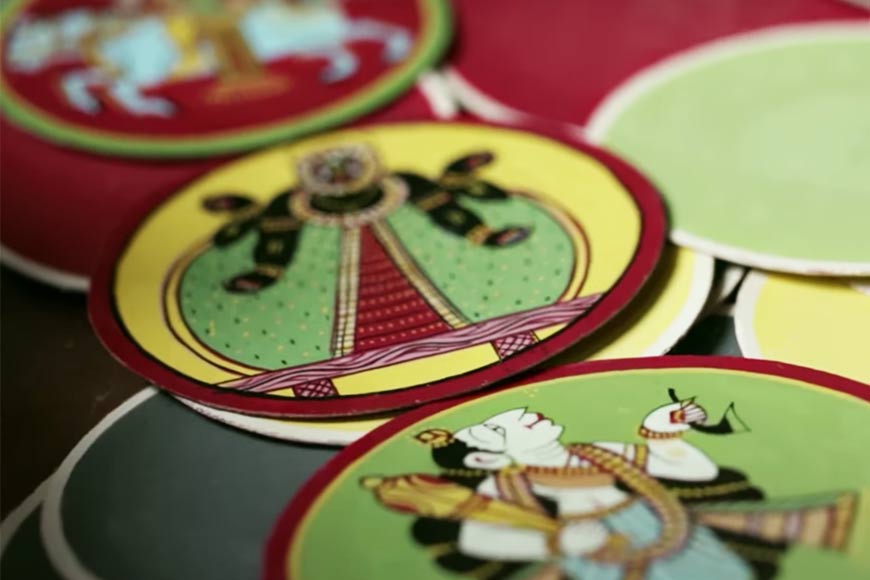
Today, the ten avatars - Matsya, Kurma, Varaha, Narasimha, Vamana, Parashurama, Rama, Krishna, Buddha and Kalki - feature on a pack of 10 circular cards. But the artisans claim they sell barely 10 packs a year. Working out of a handful of shops in Bishnupur, the Faujdars outsource their cards to a few outlets at present, including the government-operated Biswa Bangla outlet in Kolkata. They are also open to shipping their products beyond Bengal.
Additionally, they have begun using their painting techniques on other products too, such as lampshades and similar items. There was even a Puja pandal in Kolkata's Behala area a few years ago, with a Dashabataar card theme. However, what is needed is a sustained effort to popularise the art if it is to survive. And that will be possible only when it has more takers than it does now.







